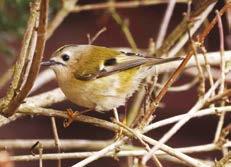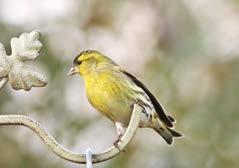
5 minute read
NATURE NOTES
Springing proud – pollinators and other insects
April will be bringing new life into the countryside and our gardens, helping us look forward to the new season with optimism following the difficulties of 2020.
Advertisement
Sunny days enable the emergence of many insect species that have spent the past few months in stages of dormancy in their winter hiding places. Early spring flowers such as Pulmonaria, Brunnera, dandelion, primrose and daffodil are invaluable sources of pollen and nectar for early bee species, bee-flies, moths, and the occasional butterfly, together with so much other wildlife enticed from hibernation.
More important, our gardens in these times offer an opportunity to do more for nature, and in turn for us even the chance to see some of our rarer species. There are so many beautiful native plants and it could be such a worthwhile project to create and establish them in places where little else would grow happily, such as stony areas or gravelled drives. To introduce at least one such plant each year will create essential links for insects that may be dependent on just one native plant species to complete their life cycles.
Some to watch out for are Dark-edged and the scarcer Dotted Bee-fly, Hairyfooted Flower Bee and other early bumble bee species, Shieldbugs and Ladybirds.
Early season moths, such as the beautiful, aptly named Streamer
Brunner Brindled Beauty Moth
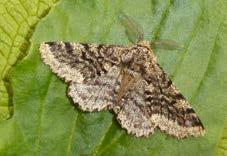
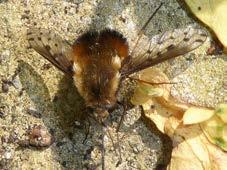
Dotted Bee-fly

Hairy-footed Flower Bee

Micro Moth
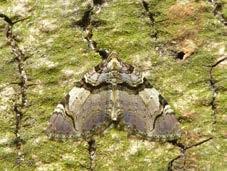
Streamer Moth moth, and the fascinating micro moth Ypsolopha mucronella, will now be flying, with species and numbers increasing as the spring progresses.
Nationally, moths are declining at an alarming rate especially in Southern Britain, due to factors including pollution, land management, climate change and habitat loss. Don’t forget that those undisturbed often hidden areas of our gardens provide safe havens for wildlife, including moths and butterflies.
Gill Nash
‘Kiss-me-John-at-the-gardengate’* … or Dorset plant names
Do you know your ‘Goosey Ganders’ from your ‘Shirt Buttons’? No! Then you don’t know early purple orchids from stitchwort, for these are their traditional Dorset names.
Some plants of course have countrywide traditional names – Daffydown-dillies (daffodils) for one, though here they’re ‘Lent Lilies’. But others have definite links to their counties and here are some that belong to Dorset.
‘St. Candida’s Eyes’ (periwinkle) refer to Candida, a Saxon hermitess, renowned for her charity and healing skills. Murdered during a Viking raid on Charmouth, her shrine in Whitchurch Canonicorum church became a place of pilgrimage and, being one of the few to survive the Dissolution, is well worth a visit.
Hopeful young men would offer their intended a posy containing ‘Lad’s Love (southernwood) though its other name, ‘Maid’s Ruin’, warned her against allowing him to be too hopeful. Adolescent boys however, rubbed their chins with southernwood to encourage beard growth, while dried and mixed with lavender, it makes an excellent moth-repellent.

Stitchwort
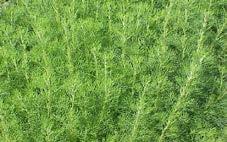
Elder, ‘God’s Stinking Tree,’ is cursed to remain forever stunted, partly because Judas hanged himself from one but mainly because it formed Christ’s cross. Yet, conversely, kindly ‘Mother’ elder gives protection against evil spirits, even Satan himself, and provides cream, muscat-scented flowers for ‘champagne’ and shining purple berries for ‘port’. But always ask before picking!
Beautiful but deadly, ‘Wolfsbane’ (aconite) was once used to kill wolves yet has the charmingly inappropriate name of ‘Lady Dove in her carriage’.
While lungwort’s lung-shaped leaves guarded against respiratory problems, their white spots made them ‘Our Lady’s Milk Sieve’ or ‘Pincushion’. In Dorset, bluebells are ‘Cuckoo’s Boots’, columbines are ‘Ladies’ Pettitcoats’ or, because they resemble a jester’s cap, ‘Folly’s Flower’. While cowslips are ‘Boys and Girls’, as girls would use Titsytotsies (cowslip balls) to discover their future husband’s name.
Their appearance makes teasels ‘Brushes and Combs’ and Michaelmas daisies, flowering when they do, mark ‘Summer’s End’, but other names stem from folklore or legend. Picking ‘Thunder Flowers’ (field poppies) causes a thunderstorm while the first snowdrops sprang from ‘Eve’s Tears’ when banished from Eden.
The loathing of invasive plants is obvious from wild clematis and bindweed both being ‘Devil’s Guts’ and couch ‘strial’, something that destroys good soil. Though why pretty germander speedwell should be ‘Hawk-yer-mother’s-eyes-out’ remains a mystery.

Wolfsbane
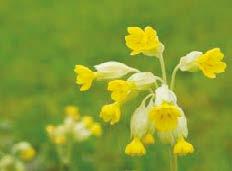
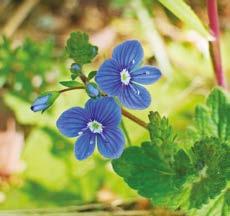
Germander Speedwell
However, ‘Welcome-home-husbandthough-never-so-late’ (sedum/houseleek) certainly paints an entertaining picture of a small-hours greeting, with frying pan attached!
Dorothy Baldock
*’Kiss-me-John-at-the-garden-gate’ is the Dorset name for pansy.
Spotted …
in the Wriggle Valley
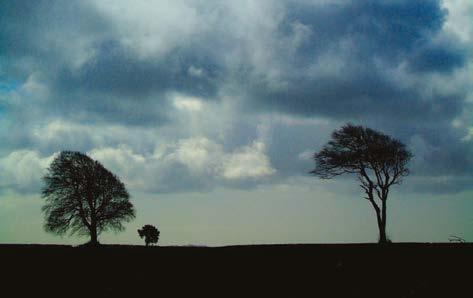
Cloud formations
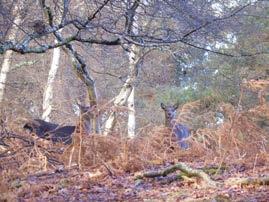
Startled deer Photo: Faith Bellamy Photo: Faith Bellamy
Photo: Rebecca Cooke
